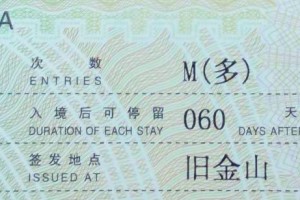Cart
Products
-
 Chinese Visa
$190 – $260
Chinese Visa
$190 – $260
Top Rated Products
-
 Chinese Visa
$190 – $260
Chinese Visa
$190 – $260
2
Nov
Also known as Imperial Palace, it was the ritual center of two dynasties, the Ming (1368-1644) and the Qing (1644-1911). Twenty-four emperors lived and ruled from this palace for more than 500 year. Situated at the heart of Beijing, the Forbidden City was built from 1406 to 1420 by the third Ming emperor Yongle who, upon usurping the throne, determined to move his capital north from Nanjing to Beijing. After Ming collapsed in1644, Qing was established by Manchu people and Forbidden City continued to serve Qing emperors until 1911. In 1911 the Qing dynasty fell to the republican revolutionaries. The last emperor, Puyi, continued to live in the palace after his abdication until he was expelled in 1924, when Palace Museum was founded at the same site.
Designated by the State Council as one of China’s foremost protected monuments in 1961, the Palace Museum was also made a UNESCO World Heritage site in 1987.
The Forbidden City is surrounded by 10-metre high walls and a 52-metre wide moat. Measuring 961 meters from north to south and 753 meters from east to west, it covers an area of 720,000 square meters. Each of the four sides is pierced by a gate. Once inside, visitors will see a succession of halls and palaces spreading out on either side of an invisible central axis. It is a magnificent sight, the buildings’ glowing yellow roofs against vermilion walls, not to mention their painted ridges and carved beams, all contributing to the sumptuous effect.
Known as the Outer Court, the southern portion of the Forbidden City centers on the halls of Supreme Harmony, Central Harmony, and Preserving Harmony. These are flanked by the halls of Literary Glory and Military Eminence. It was here that the emperor held court and conducted his grand audiences. Mirroring this arrangement is the Inner Court at the northern end of the Forbidden City, with the Palace of Heavenly Purity, the Hall of Union, and the Palace of Earthly Tranquility straddling the central axis, surrounded by Six Palaces of the East and Six Palaces of the West and the Imperial Garden to the north. Other major buildings include the halls for Worshipping Ancestors and of Imperial Splendor on the east, and the Hall of Mental Cultivation, the Pavilion of the Rain of Flowers and the Palace of Benevolent Tranquility on the west. These contain not only the residences of the emperor and his empress, consorts and concubines but also the venues for religious rites and administrative activities.
In total, the buildings of the two courts account for an area of some 163,000 square meters. These were laid out precisely in accordance with a code of architectural hierarchy, which designated specific features to reflect the paramount authority and status of the emperor. No ordinary mortal would have been allowed or even dared to come within close proximity of these buildings.
Apart from its glorious architectures, Forbidden City is so rich in culture relics, including sacrificial vessels and ancient jade artifacts from the earliest dynasties; paintings and calligraphy from the Tang, Song, Yuan and Ming dynasties; porcelain from the Song and Yuan; a variety of enamelware and lacquer ware; gold and silver ornaments; relics in bamboo, wood, horn and gourds; religious statues in gold and bronze; as well as numerous imperial robes and ornaments; textiles; and furniture; countless books, literary works and ancient records.
Copyright 2013~2018 Palace Travel (U.S.) Inc. - All Rights Reserved